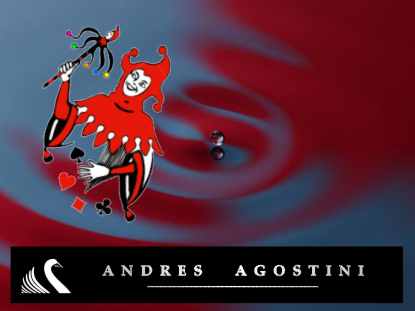Henry Ford’s Success Prescription
Without getting into deep waters, I have always admired the technical achievements of Mr. Henry Ford. In the process, I have had held a great perspective about any developments by the Ford Motor Company as well.
Interestingly enough and in all formality, R&D in Ford means R&D&Innovation.
Whenever they want to and as they already have, Ford Motors Co. can change the world again and again and again, without constraints. Actually, it is their decision.
I am not only in admiration regarding the Henry Ford’s teachings about the assembly line went so universal to this date. First, said teachings went to nascent automakers from Japan, Germany, and Italy and then NASA.
Yes, NASA. I had a close professional relationship with a NASA physicist and engineer who told me that NASA, in order to get launched first during the Cold War I, carefully studied many, many technical achievements and developments, starting with those of and by Mr. Ford were the most important at the time.
I have this stern habit to root-cause-analys everything, both in profession and beyond. So, when I became fluent on Mitsubishi Motors’ and Toyota Motors’ corporate culture and procedures and approaches, I clearly understood that the stepping stone, as canonical milestone #1, had been Ford.
The Japanese Industrial Miracle, caremakers-wise, hence began with Ford Motors Corp. As much as I like many aspects of the Japanese practical notions of quality assurance and continuous improvement and reliability, I was always reverse-engineering my (gendaken) thought experiments, attempting to find where the common grounds (point of intersection) between the Japanese and Ford were located. A magnificent long story that I explained at a better length in the White Swan book.
The more and more I reflect on it, the more I get marveled at the high-end quality manufacturing of and by the Japanese. But I cannot stop thinking either about the great U.S. Scientists who taught the Japanese about Quality Control procedures.
German Quality Assurance is also magnificent.
Every form of Quality Control, whatever is called and as that it is known to me, daily takes place in large corporations in which they Management Best Practices are gargantuan balancing acts, duly orchestrated, second for second.
Most probably the type of Quality Control I am talking about that came to my hands and eyes was the one by the U.S. Navy, Los Alamos National Laboratories, Royal Dutch Shell, as well as by luminaries as W. Edwards Deming, Joseph Juran, Bill Conway, Sakichi Toyoda, Kiichiro Toyoda, and the Taiichi Ohno.
All of these institutions and people are all about the Power of Complexity. From there, they then exploit, as possible, the Power of Simplicity. Ergo, the Power of Simplicity is a direct function of the Power of Complexity, never the other way around.
But these and them, as many c-level executives I have had the pleasure to meet or worked with, know exactly that the corporate complexity of multinationals is beyond unprecedented and is not, by way of example, found within the enterprising theater of operations of so-called: Start-ups, SMEs (Small and medium-sized enterprises).
Nonetheless, one day, some four years ago or so, I got lucky. I got a computer update and notice about a gentleman speaking about some serious Quality Assurance back in 2011. I paid attention and observed that he was highly specialized in the field and asked him about a book for me to read on the subject.
He immediately suggested the following:
Kaizen: The Key To Japan’s Competitive Success
Nov 1, 1986. By Masaaki Imai
ISBN: 978–0075543329
Then, time elapsed. Once on a while, I was though noticing some of his content-enriched updates as I was paying undivided attention, nurturing my POVs even further.
As years went by, and I was seeking a better understanding to further my knowledge base in hard-core management, I got to exchange a couple of electronic messages with this gentleman and professional.
In the process, I learned that he has been the key and highest Quality Assurance executive at Ford Motors Co., with an amazing proven-track record and professional trajectory. He had both the merits and outcomes on his behalf.
Then, I immediately realized that he belonged to my natural “…Complexity Ballpark…” People who understand said Complexity Ballparks in times in which most firms are too tiny to understand him or me or “Neutron Jack” (General Electric’s worldwide CEO, Jack Welch), in a millennial era in which entrepreneurs fly solo or duo.
He had access to some of my writings and understood where I was coming from, using extremely holistic and exceedingly preemptive beyond-insurance risk management, while adhering to chapters of Kaizen, Toyota Production System, Six Sigma, Lean, Agile, and Juran Prescription, as those are structurally embedded in my proprietary Transformative and Integrative Risk Management (problem-solving) methodology.
To this date, we keep each other’s professional development in and within our respective loop.
Suddenly, some months ago, he had a special kindness, that I am in great gratitude for, when he wrote:
“ … Andres is the greatest critical thinker I know, need I say more? For those clients seeking wisdom and rightness (which the wise ones do!) should contact this brilliant right brain thinker immediately …”
Authored By Copyright Mr. Andres Agostini
White Swan Book Author (Source of this Article)
http://www.LINKEDIN.com/in/andresagostini
http://www.AMAZON.com/author/agostini
Authored By Copyright Mr. Andres Agostini
White Swan Book Author (Source of this Article)
http://www.LINKEDIN.com/in/andresagostini
http://www.AMAZON.com/author/agostini
